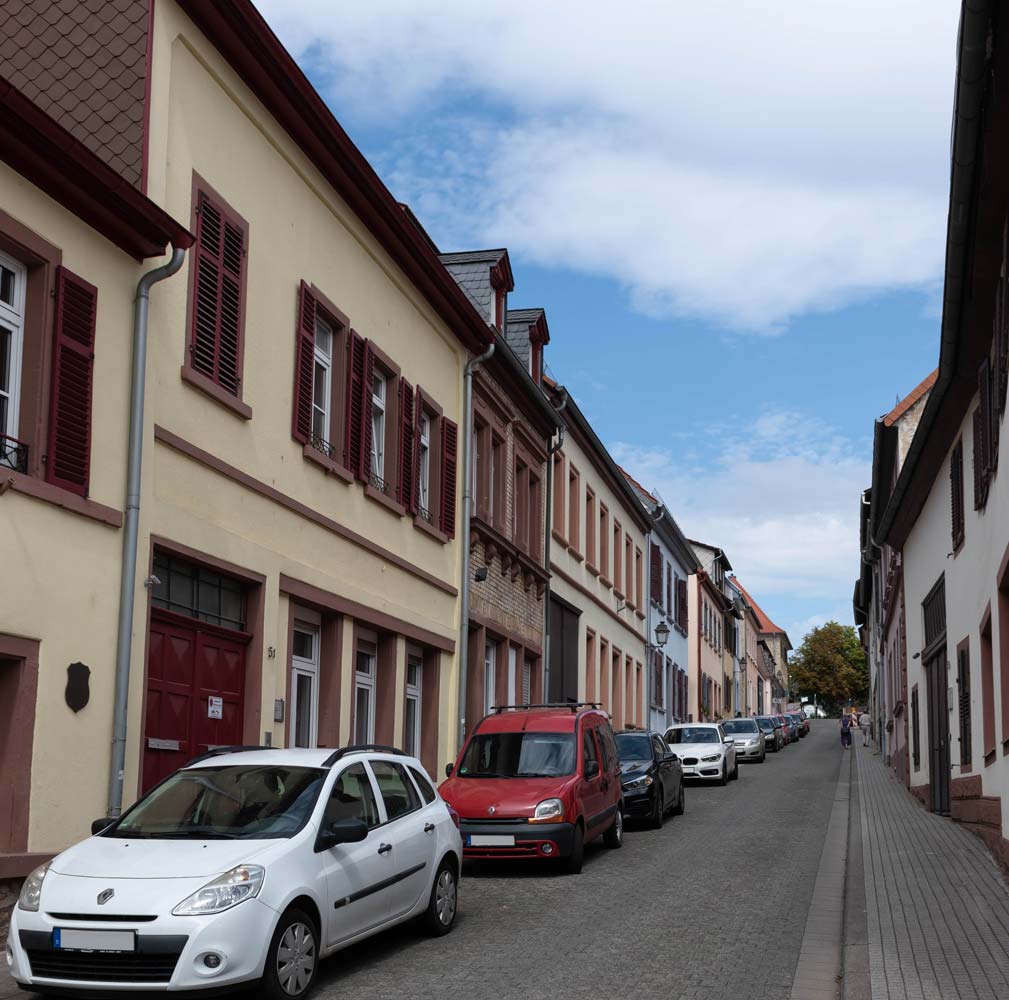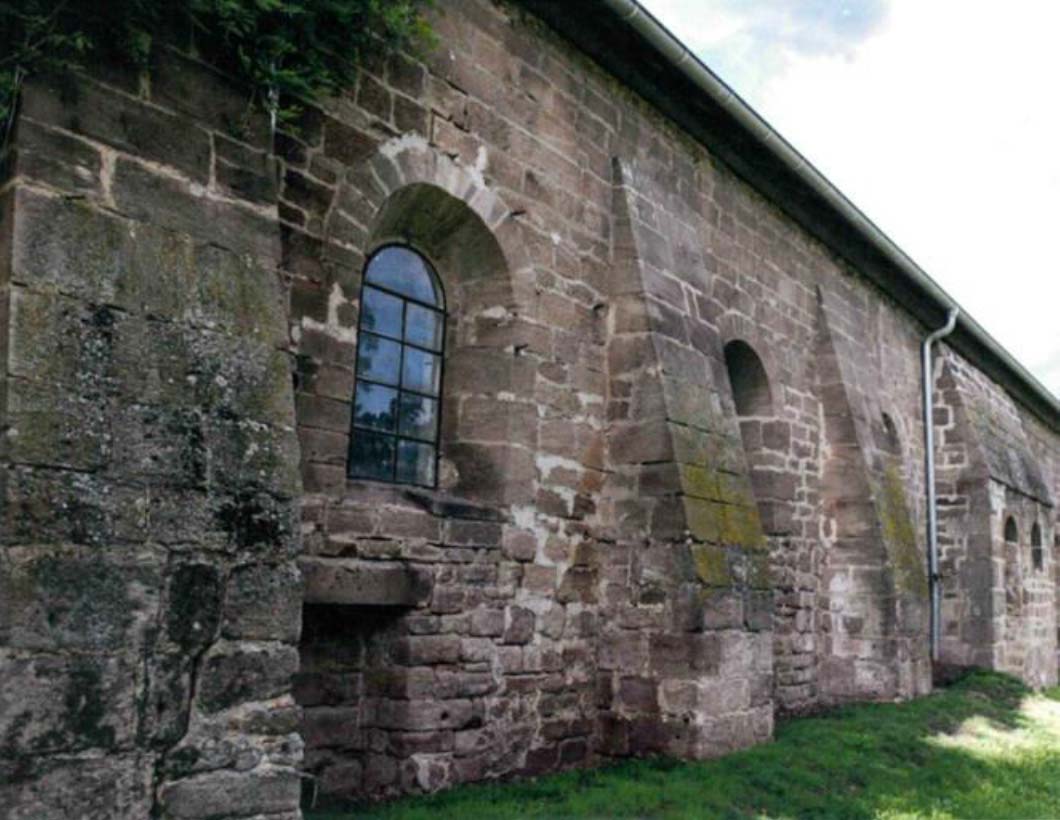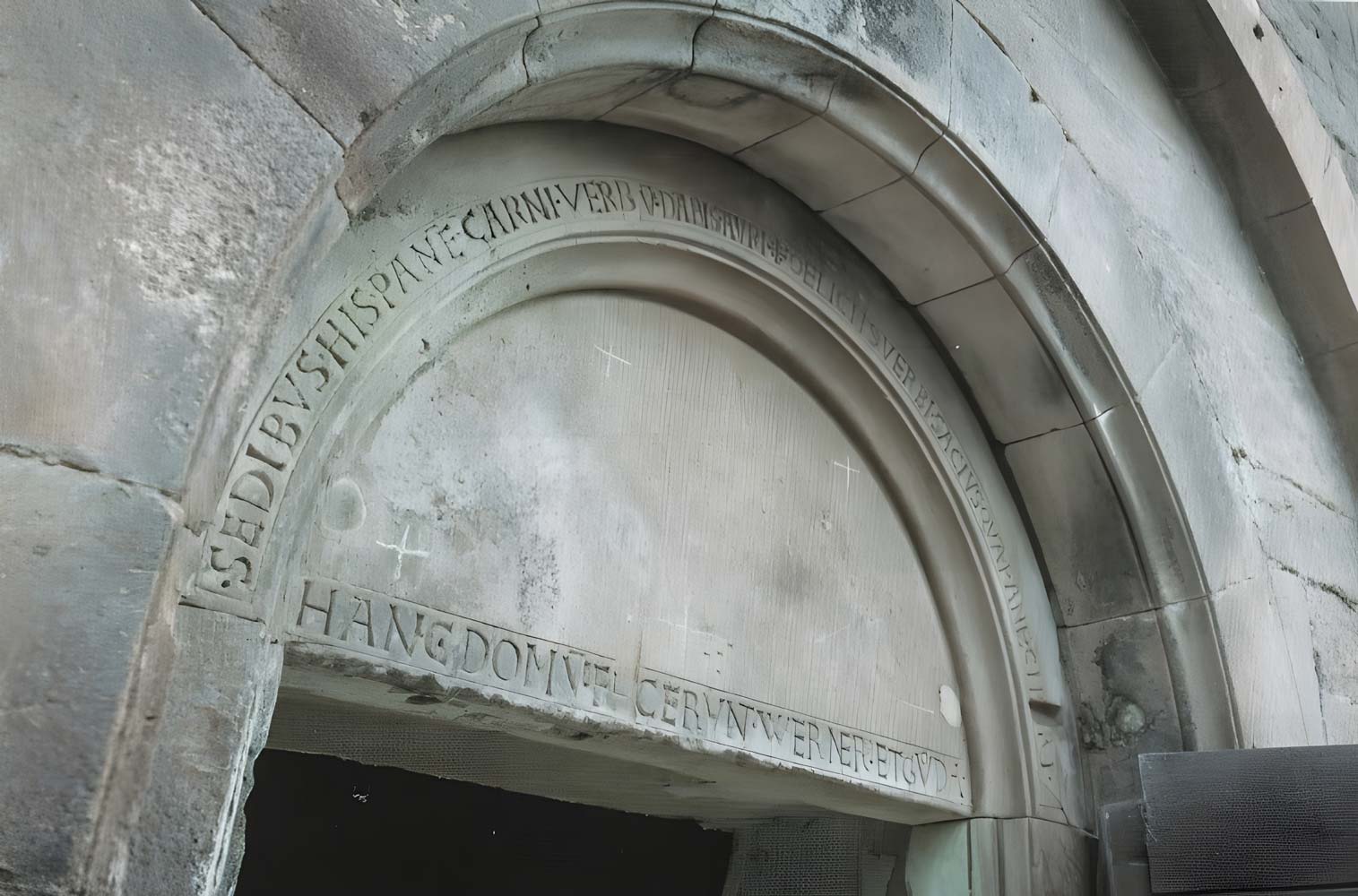Rotenkirchen Gate


Rothenkirchen Monastery
Rothenkirchen Monastery, founded by Werner II von Bolanden (1118 – approx. 1190) and his wife Guda (HANC DOMVM FECERVNT WERNER ET GVDA) around 1160, is located one hour (3 km) north of the “Rothenkircher Pforte”.
Only the Romanesque refectory remains of the once very extensive abbey. The Premonstratensians were resident in Rothenkirchen. The dissolution of their monastery in 1544 is to be seen in a double context: the general crisis of the late medieval church and a monastic self-image that had lost its deeper meaning as a result of the arched inscription at the entrance to the refectory, the monks’ dining room.
SEDIBVS HIS PANEM CARNI VERBVM DABIS AVRI, DELICIIS VERBI SACIVS QVAM PANE CIBARI
Here food is offered to the body, the word to the soul; better than the food nourishes you, the sweetness of the word nourishes you.


Upper town
Successful medieval town projects soon grew beyond their walls. This gave rise to suburbs, most of which also had a protective wall to the outside.
An “upper town” thus developed in Kirchheimbolanden. This meant that the entire town area now covered around 4.5 hectares (two thirds of which was within the ring of walls). The total number of houses can be assumed to be around 130 (40 of which were in the “upper town”). The number of inhabitants is likely to have been around 450 in the town center, with an additional 180 in the upper suburb.
Langstraße (today’s house numbers 31 and 32 to 51/53 and 54) formed the axis of the “upper town”. Today, this street area is dominated by Baroque buildings (for example Langstraße 34 or 37/39/41/43), as is Neugasse as the transverse axis.
Konrad Lucae
Konrad Lucae (1910-1999), Kirchheimboland’s town historian of great merit and museum director for decades, is the author of a series of fundamental publications on local history. Although they are now largely out of print, they can still be viewed at the museum in the town palace [Standort 28]:
● Kirchheimbolanden in alten Ansichten (1978),
● Kirchheimbolanden und der pfälzisch-badische Aufstand 1848/49 (1979),
● [zusammen mit Karl Theodor Lucae] Kirchheimbolanden und seine Bürger (1983),
● Stadt Kirchheimbolanden. Mauern und Türme (1985),
● Die Wappen der Geschlechter, Amtsleute und Vasallen im Kirchheimer Raum (1983).